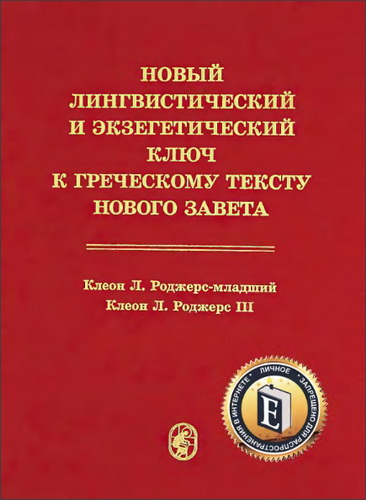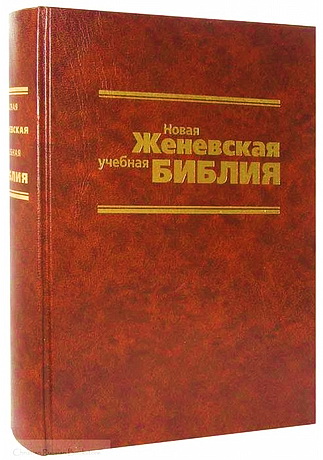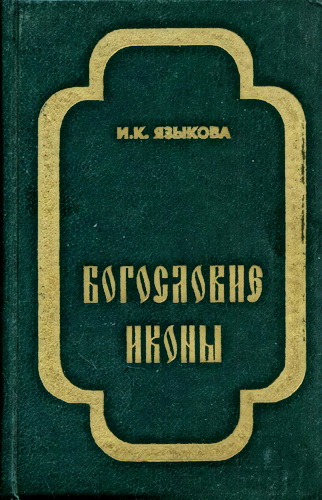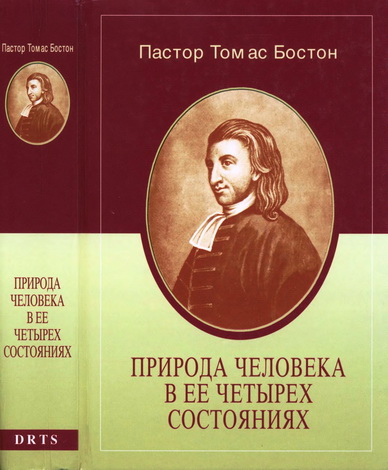
Musser - Price - New Handbook of Christian Theologians
Donald W. Musser and Joseph L. Price - New Handbook of Christian Theologians
Abingdon Press, 1996. - 524 p.
ISBN 0-687-27803-1 (alk. paper)
As one of the standard resources for theological education during the last three decades, A Handbook of Christian Theologians, edited by Martin Marty and Dean Peerman, introduced a generation of students to theologians whose voices and visions had shaped the midcentury course of Christian theology. Since its initial publication the current of theology has taken new directions, diverging into several distinct streams. Although various works and series of separate texts have occasionally sought to present essays about sets of current theologians, and although an enlarged edition of the Marty and Peerman volume appeared more than a decade ago, we have sensed the need to provide a more expansive volume focusing on the shapers of Christian theology at the turn of the millennium.
The earlier Marty and Peerman collection will continue to be a viable resource because the persons whom it considers—Friedrich Schleiermacher and Søren Kierkegaard, Albrecht Ritschl and Adolf von Harnack, Rudolf Bultmann, Teilhard de Chardin, among others—are identified with main currents of Protestant and Roman Catholic thought in this century. Christian theology has proliferated beyond the liberal, neoorthodox, neothomist, and conservative camps that had dominated the European and North American models and concerns through the middle of this century. From groups whose issues and perspectives had often been ignored or suppressed by the predominantly white, male group of theologians, new voices have begun to clarify, articulate, and direct expressions of Christian thought. In recent years, the flow of Christian theology has been channeled in diverse streams of thought represented by such trends and movements as black theology, liberation theology, feminist theology, and womanist theology—all of which have sprung forth since the publication of the Marty and Peerman handbook.
Some familiar names do not appear in the roster of theologians who are treated in this volume. In some cases, because of the usual limits imposed on length, representatives of the various traditions and trends in developing Christian theology had to be selected. In other cases, authoritative contributors could not make commitments to write about important figures. And regrettably, in still other cases, such as the anticipated essay on Bernard Lonergan, contracted authors had to withdraw from the project at such a late date that publication had to move forward without substitutions.
Because Christian theology has become so diverse in its expressions, the issue arises, of course, as to whether or not Christian theology as a unified "discipline" or discourse continues to exist in the multifarious forms that distinguish it (often so radically) from its sources. But even as the powerful and ancient current of the Mississippi River splits and spreads out to empty effectively into the Gulf of Mexico, so too the testimonies of various Christian theologians pursue a common goal—to make sense of their experience of divine revelation and human hope.
Perhaps Christian theology no longer can be identified with the single channel of a mighty river coursing toward its mouth; instead, Christian theology might be compared to the separate, rich repositories of silt in a delta created by the diverging channels of distributaries as they pursue the common goal of emptying into the sea. The very presence and richness of the delta deposits result from their soil having been transported by the river itself. In a like manner, the divergent courses created by current Christian theologians draw their power from the traditional stream of Christian theology that has fed them, even as they distinctly and separately course toward the single sea.
One of the possible ways to survey the delta of current Christian theology is to navigate the streams through which its identity is shaped—to examine the theologies of representative theologians. In that regard, we have identified various routes for reading, in part to offer alternate ways to utilize this resource and also to suggest the possibility of undertaking a preliminary exploration of comparative Christian theologies. To facilitate this possible exploration, we have identified several common themes or issues within many of the essays, thus demarcating such recurrent concerns as the ways in which the theologians consider the sources and goals for theology, their variant assumptions and conclusions about the nature of God, their divergent approaches to understanding the person and purpose of the Christ, and their distinct expectations for the destiny of history and faith.
* * *
LINDBECK GEORGE 1923–
Life and Career
George A. Lindbeck was born in China in 1923, the son of Lutheran missionaries who were Americans of Swedish descent. He lived and went to school in China and Korea until he came to the United States to attend Gustavus Adolphus College in Minnesota. Having completed his B.A. there in 1943, Lindbeck received the B.D. from Yale Divinity School in 1946, and the Ph.D. from Yale in 1955. His doctoral dissertation, completed after study in Toronto and Paris with Étienne Gilson and Paul Vignaux, two of the century’s leading scholars of medieval thought, was on essence and existence in the philosophical theology of John Duns Scotus. Appointed to the Yale faculty in 1952—where he remained until his retirement in 1993—Lindbeck’s early teaching and writing focused on later medieval philosophy and theology.
Lindbeck might be known today primarily as a medievalist were it not for Pope John XXIII’s decision to convene the Second Vatican Council. Largely because of his work on medieval Roman Catholic thought, Lindbeck was invited to be one of the sixty or so delegated observers to the Council from outside the Roman Catholic Church. He represented the Lutheran World Federation at all four sessions of the Council (1962–65). This experience turned his theological career in a new direction: Following the Council, Lindbeck devoted himself primarily to ecumenical theology, and in particular to Lutheran–Roman Catholic dialogue. Much of Lindbeck’s extensive bibliography is concerned with doctrinal, conceptual, and practical problems of ecumenical dialogue, as is the work for which he is best known, The Nature of Doctrine: Religion and Theology in a Postliberal Age (1984; hereafter ND).
Together with some of his more recent articles, this book has had an influence far beyond the circle of those who share Lindbeck’s motivating interest in the doctrinal reconciliation of historically divided Christian confessions. In relatively brief compass, Lindbeck maps a wide-ranging vision of the nature of religion, Christian doctrine, and Christian theology, challenging the views that have tended to dominate American academic theology over the last generation. In the course of articulating this vision of religion, doctrine, and theology, Lindbeck makes a number of suggestions about the central topics of Christian theology, such as God, Christ, church, and salvation. But his overall outlook is perhaps most readily approached by attending to the way he conceives of theology’s tasks and commitments.
Theology’s Tasks
In order to arrive at a clear conception of its nature and tasks, Christian theology should, according to Lindbeck, be distinguished from and related to both first-order Christian practice and church doctrines.
Theology presupposes continuing practices of liturgy, sacraments, preaching, prayer, service, and the like, which are indispensable to the identity and continuity of the Christian community. Theology, in other words, presupposes the Christian religion. Religions, including Christianity, are for Lindbeck most plausibly understood as "cultural-linguistic" systems, structured networks of belief and practice which shape the primary truth claims their adherents make and the deepest experiences they have. Lindbeck draws on recent social science (especially Clifford Geertz) and philosophy of language (especially Ludwig Wittgenstein) to support this way of understanding the nature of religion, and he contrasts it with two other approaches that have held sway in Christian theology: traditional "propositionalism," for which religions are chiefly competing sets of truth claims, and modern "experiential-expressivism," for which religions are chiefly ways of giving outward utterance to prior inward experiences.
Church doctrines are "communally authoritative rules of discourse, attitude, and action"; these may be (and in Christianity often are) expressly articulated, but any coherent community that exists over time will necessarily have at least implicit doctrines in this sense (ND, 1984, p. 18). What church doctrines regulate is precisely the continuing practices of the Christian community, and so they specify the community’s sense of its own identity on matters of central importance to it; belief and practice inconsistent with these rules cannot endure in the community without producing either division or a decisive loss of identity. Conceiving church doctrines primarily as rules for speech about God and Christ (and many other matters of great importance to the Christian community), rather than as first-order speech directly about God and Christ, best captures the function that these doctrines have actually had in Christian history. It also allows for significant differences of belief among people who nonetheless share the same doctrinal commitments—that is, who belong to the same community. Lindbeck strives to support his argument for a "rule theory of doctrine" through an analysis of the trinitarian and christological doctrines of the ancient church, and of the more recently contested doctrines about Mary and papal infallibility (see ND, 1984, pp. 73-111). Here lies the heart of Lindbeck’s ecumenical proposal.
Theology itself neither generates nor recaptures adequately the communal practices upon which it reflects, and so it is essentially a second-order task distinct from those practices. But it is one that the Christian community through most of its history has had difficulty doing without; theology has been invaluable in the church’s understanding and correction of its own continuous belief and practice. In contrast to church doctrines, theology typically examines "everything that it is desirable to teach rather than only with that which functions as communally essential" (ND, p. 76). This distinction suggests that theological diversity (limited by the rules essential for communal identity) within the Christian community is not only possible but desirable. The theological differences which regularly occur need not be divisive; they need not, in other words, constitute disagreements about what is communally essential. Lindbeck’s position also suggests that what is best to teach cannot simply be derived from what is communally essential, so that identification of what is communally essential—of Christian "doctrine" in his precise sense of the term—leaves most of the theological task still to be done.
As Lindbeck sees it, the theological task has three basic aspects: the dogmatic, the practical, and the foundational (to use the established labels). Although distinguishable for purposes of analysis, these three projects always shape one another in practice.
Dogmatic theology attempts to give "a normative explication of the meaning a religion has for its adherents," or, we could say, to unfold as thoroughly as possible the community’s vision of the world and of how we should live in it (ND, p. 113). This task inevitably involves a mix of normative and descriptive elements; the theologian makes a broad range of judgments about what constitutes, in a specific time and place, a faithful articulation of the worldview and ethos of the community, and the theological outcome is then tested for the adequacy with which it recaptures reflectively the deep commitments of the community displayed in its actual historical practice. This is accomplished most directly, perhaps, by seeing whether competent speakers of the community’s language who are able to understand a theology recognize the practice it describes as their own.
Practical theology aims to apply the community’s overarching vision of reality to specific problems in the church and the world in ways that are both faithful to the community’s vision and relevant to the problems at hand. In his own account of the task of practical theology, and even more in his massive ecumenical labors, Lindbeck attends especially to ways in which this aspect of the theological task may enable us "to shape present action to fit the anticipated and hoped-for future" (ND, p. 125).
What is usually called foundational theology (or apologetic theology) aims to show how the worldview and ethos of the community is intelligible and credible—how they depict what Lindbeck calls a "followable" or "habitable" world and not an ultimately mythical or primarily imaginary one. Lindbeck’s own way of handling the issue of credibility precludes labeling this task "foundational" theology, since he rejects the apologetic appeals to epistemic foundations which characterize much of modern theology. He does not, however, reject the question of credibility; rather, as the next section explains, he suggests a different way of answering it.
In undertaking its various tasks, theology should engage in a conversation that is expansive and critical, and it should undertake its engagement with others in a generosity of spirit that is unsatisfied with criticizing an apparently opposing position until the theologian can make a better argument for the opposing position than its critic can make against it. These theological desiderata are seldom mentioned explicitly by Lindbeck, but are rather displayed in the way he attempts to go about doing theology. Theology should aim to construct a comprehensive vision of the world, which does not ignore but rather tries to make Christian sense out of apparently alien beliefs and practices. Conceptual tools for this task may be found in both explicitly theological sources and secular disciplines. Lindbeck, for example, engages the social sciences not only in his theory of religion and doctrine but also in his handling of disputed ecumenical questions like infallibility. In a phrase from Kenneth Burke (to which David Tracy also appeals in characterizing the demeanor of theology), theology as Lindbeck conceives it should "use all that can be used." To be sure, not everything can be used (or more precisely not everything with which one is acquainted, which will always be very far short indeed of "everything"); theology must have a critical edge the sharpness of which matches its breadth of vision. Deciding what cannot be used especially requires a willingness and ability to see an issue and its supporting arguments from an opponent’s point of view. Lindbeck’s primary model for this quest to see each theological question from every available angle is Thomas Aquinas, but the very effort to do so is simply the theological application of Luther’s injunction always to put the best construction on things.
Theology’s Commitments
Lindbeck’s definition of theology aims to permit considerable diversity. Lindbeck proposes, however, that in the present circumstances of church and academy theology needs a definite shape; it will best fulfill its tasks if it is guided by at least the following specific commitments.
Theology should ascribe consistent primacy to the scriptural story of Israel and Jesus Christ in articulating both the meaning and the truth of a Christian vision of reality. Lindbeck relies on his longtime colleague Hans Frei for the notion that the Bible is unified by a complex but coherent narrative which centers on the personal agent Jesus of Nazareth, whose unique identity emerges in the Gospel stories of his path from Bethlehem to Golgotha and the Emmaus road. This overarching narrative holds together the diverse materials of the Bible: "poetic, prophetic, legal, liturgical, sapiential, mythical, legendary, and historical" (ND, 1984, p. 120). Here Lindbeck clearly thinks that the exegetical labors of theologians like Karl Barth and Hans Urs von Balthasar provide considerable support for reading the Bible this way.
This narratively centered text, Lindbeck argues, "evokes" its own "domain of meaning" (ND, p. 116). It may and should be interpreted theologically by extended attention to its own linguistic details, and especially to the interconnections of action, character, and circumstance that constitute its unique narrative shape. By contrast, the Bible should not be read theologically by trying to find another, independent "domain of meaning" or interpretative framework into which the theologian attempts to translate the language of the biblical text and determine its sense. Lindbeck is especially concerned to avoid theological interpretation that takes descriptions of putatively universal human experience to constitute just such a quasi-independent interpretative framework.
To read the Bible by ascribing interpretative primacy to the narrative that identifies Israel and Jesus Christ does not, on Lindbeck’s account, allow for complete interpretative neutrality, but is tied up with some basic claims about the content of that narrative and of scripture as a whole. The story of Israel and Jesus Christ unfolds so that it identifies as its primary agent the God of Israel, who fully shares the divine life with the world by sending both the Son and the Spirit into the world. So the central narrative, and with it the whole of Scripture, should be read in a deeply trinitarian and christological way. The sort of theological reading for which Lindbeck argues interprets the text, in what he characterizes as the classical Christian manner, "as a canonically and narrationally unified and internally glossed (that is, self-referential and self-interpreting) whole centered on Jesus Christ, [which tells] the story of the dealings of the Triune God with his people and his world in ways which are typologically . . . applicable to the present" ("Scripture, Consensus, and Community," 1989, p. 75).
The aim of reading the Bible in this "internally glossed" and "self-referential" way is not to isolate the Bible from the rest of human belief and practice, but the opposite: to construct a comprehensive vision of life and reality. Or as Lindbeck puts it, this sort of interpretation aims at "imaginatively incorporating all being into a Christ-centered world" (ND, p. 118). The narratively centered biblical text ought to have primacy in shaping a Christian vision of all life and reality; thus Lindbeck concludes that the Bible may and should be handled theologically so that it not only evokes its own domain of meaning but generates its own criteria of truth. Judgments about truth and falsity are ultimately, though not solely, judgments about the coherence of beliefs and practices with the Christ-centered world depicted in Scripture, rather than judgments about how this Christ-centered world fits with some other criterion. And Christian visions of the world constructed by ascribing primacy in the order of meaning and of truth to the biblical narrative of creation, fall, redemption, and consummation will display their truth, and anticipate their eschatological confirmation and fulfillment, precisely by their ability to make sense of, and to hold true on their own terms, the ever-varied claims to truth that the Christian community encounters on its way from Pentecost to the parousia.
This way of reading the Bible is at bottom the historical practice of a particular human community, the church, rather than a product of the individual theological imagination. This community’s identity, and so its own continuing reality, are decisively shaped by this practice. Therefore the natural home for a theology that ascribes interpretative and epistemic primacy to scripture read as a trinitarian and christological narrative is the continuing life of the church and the decisions that this community continually must make about its own identity—about how to be faithful to the God depicted in this narrative. As Hans Frei observes, precisely in order to do justice to both the churchly and academic vocations of the theologian, this sort of theology calls on one "to order one’s priorities. . . . Both vocations are best served when theology is seen to be in service to the church first, to the academy second" (Frei, "Lindbeck," 1990).
The church, moreover, finds not only its God in the story of Israel and Jesus Christ, but finds itself as well. On Lindbeck’s account, "The church is fundamentally identified and characterized by its story" (Scriptural Authority and Narrative Interpretation, 1988, p. 165); attributing specific characteristics to the church, however distinctive (such as unity, holiness, catholicity, and apostolicity), depends on the identification of the church as a particular community that takes place by means of the scriptural narrative. And this story, Lindbeck stresses, binds the church irrevocably to Israel, past and present. Since the publication of The Nature of Doctrine, Lindbeck has concentrated particularly on the articulation of an ecclesiology for which the church is primarily the pilgrim people of God in unity with and dependence upon Israel, despite the division, perhaps to endure until the eschaton, between the church and the Jewish people. This ecclesiology, which Lindbeck suggests could also be viewed as an "Israelology," comes not at the sacrifice of the church’s distinctive belief in the triune God and the incarnation, but as required by the same narrative which supports those very beliefs.
Conclusion
Lindbeck’s recommendation of a theology centered on the scriptural word that creates and sustains a community in which that word is continually interpreted anew clearly displays its Lutheran provenance, although Lindbeck does not rely on distinctively Lutheran theological arguments to justify it. He labels this approach to theology "postliberal," but only in order to distinguish it from what he takes to be the dominant trend in nineteenth- and twentieth-century academic theology, and not in order to suggest its distinctiveness or novelty on some larger scale. Earlier theologians like Luther and Aquinas are Lindbeck’s favorite examples of skilled practitioners of this way of doing theology, which he finds massively embodied in recent theologians like Barth and von Balthasar, who share relatively little of Lindbeck’s conceptual idiom for articulating what he takes to be the classically Christian sense of theology’s tasks and commitments. Thus on Lindbeck’s own account any attempt to articulate those tasks and commitments best serves not as a topic of interest in its own right, but as a modest aid toward what really matters, which is to do theology well.
Bruce D. Marshall
Selected Bibliography
- 1984 George A. Lindbeck, The Nature of Doctrine: Religion and Theology in a Postliberal Age.
- 1988 George A. Lindbeck, "The Story-shaped Church," in Garrett Green, ed., Scriptural Authority and Narrative Interpretation.
- 1989 George A. Lindbeck, "Scripture, Consensus, and Community," in R. J. Neuhaus, ed., Biblical Interpretation in Crisis.
- 1990 Bruce D. Marshall, ed., Theology in Dialogue: Essays in Conversation with George Lindbeck.
- 1990 Hans W. Frei, "George Lindbeck and The Nature of Doctrine," in Marshall, ed., Theology and Dialogue.





Комментарии
Пока нет комментариев. Будьте первым!